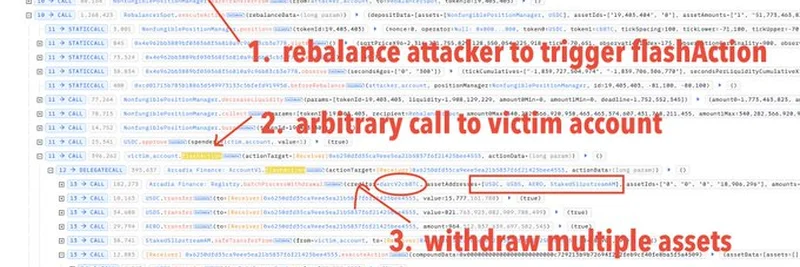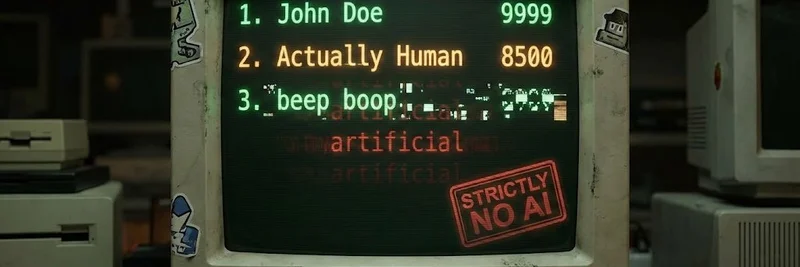Hey there, crypto enthusiasts! If you’ve been keeping an eye on the DeFi space, you’ve probably heard about the recent ArcadiaFi hack that shook the community. Posted by Chaofan Shou on X, this incident resulted in over $2 million in losses due to a clever exploit involving rebalancing and arbitrary calls. Let’s break it down in a way that’s easy to understand, even if you’re new to the blockchain world.
What Happened in the ArcadiaFi Hack?
The hack targeted ArcadiaFi, a protocol running on Ethereum and Optimism, and it all started with a flaw in the rebalancing process. Rebalancing, for those unfamiliar, is like adjusting the weights of assets in a portfolio to keep things stable. In this case, the attacker manipulated this process by crafting special data to trick the system.
Here’s how it went down, as shown in the image breakdown from the tweet:
- Rebalance Attack to Trigger FlashAction: The attacker kicked things off by rebalancing their account, which triggered a function called
flashAction. This is a powerful tool that lets the system execute actions quickly, but it became a weak point here. - Arbitrary Call to Victim Account: Using this opening, the attacker made an unexpected call to a victim’s account. This allowed them to sneak into the system and set up the next move.
- Withdraw Multiple Assets While Repaying Only One: The real damage came when the attacker withdrew multiple assets from the victim’s account while only repaying a single debt. It’s like borrowing a bunch of stuff and returning just one item—pretty sneaky!
The exploit relied on a chain of calls, starting with Rebalancer.rebalance and looping back through Account.flashAction and Rebalancer.executeAction. This gave the attacker full control over the data sent to the victim’s account, letting them manipulate the asset withdrawals.
How Did This Cost $2 Million?
The brilliance (or rather, the danger) of this hack lies in its efficiency. By controlling the flashAction function, the attacker could specify fewer debt assets to repay while siphoning off a larger amount of underlying assets. This imbalance quickly added up, leading to the massive $2 million loss. The tweet points to a detailed analysis here if you want to dig deeper into the code.
What Does This Mean for DeFi?
This hack is a wake-up call for the decentralized finance (DeFi) world. It highlights the risks of smart contract vulnerabilities, especially when it comes to reentrancy (where a function calls back into the system unexpectedly) and untrusted input validation. For blockchain practitioners, it’s a reminder to double-check security measures like vault health checks and input controls.
At Meme Insider, we’re all about keeping you informed, especially as meme tokens and DeFi projects often overlap. This incident shows that even established protocols aren’t immune to attacks, so staying updated on the latest tech news is crucial.
Lessons Learned and Looking Ahead
So, what can we take away from this? First, robust security audits are a must—protocols like ArcadiaFi could benefit from expert reviews to catch these flaws early. Second, developers might need to rethink how rebalancing and flashAction functions are designed to prevent such exploits. And for us users? Keeping an eye on project updates and security patches is key.
This hack might seem like bad news, but it’s also a chance for the DeFi community to grow stronger. Have you been following this story? Drop your thoughts in the comments—we’d love to hear what you think about the future of DeFi security!



